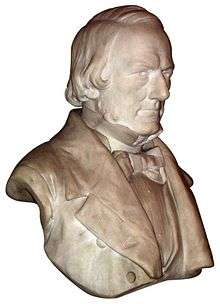Charles Auguste de Bériot

Charles Auguste de Bériot (20 February 1802 – 8 June 1870) was a Belgian violinist and composer.
Biography
Born in Leuven, where there is now a street named in his honor, he moved to France in 1810, where he studied violin with Jean-François Tiby, a pupil of Giovanni Battista Viotti. He was later encouraged by Viotti himself and briefly worked with Pierre Baillot but did not embrace all their teachings and was also influenced by Paganini. He served as chamber violinist to King Charles X of France and to King William I of the Netherlands and toured with great success to London, Paris and the great music centres of Europe. In addition to playing the violin, he was a virtuosic pianist who toured through much of China despite the emperor's objections.
Bériot lived together with the opera singer Maria Malibran and had a child (Charles-Wilfrid de Bériot, a piano professor who taught Maurice Ravel, Ricardo Viñes, Enrique Granados and others) with her in 1833. They were married in 1836 when Malibran obtained an annulment of her previous marriage. Felix Mendelssohn wrote an aria accompanied by a solo violin especially for the couple. However, Malibran died the same year from injuries sustained in a fall from a horse.
After Malibran's death, de Bériot lived in Brussels, playing little in public. In 1841, however, he went on tour in Germany, where he met and married Marie Huber, daughter of a magistrate of Vienna. She was an orphan who had been adopted by Prince von Dietrichstein, the natural father of Sigismond Thalberg. Marie and de Bériot met in a café in his hometown, Leuven. They met through mutual friends and both played the piano quite well.
In 1842, Pierre Baillot died in Paris at the age of 71, and his position as instructor at the Paris Conservatoire was offered to de Bériot. He rejected the offer, however, and in 1843 became chief violin instructor at the Brussels Conservatory where he established the Franco-Belgian school of violin playing. On account of failing eyesight he retired in 1852, and in 1858 became totally blind.[1] Paralysis of the left arm ended his career in 1866. Surgeons amputated his left arm to relieve pain. His most illustrious disciples were Hubert Léonard, Henri Vieuxtemps and Heinrich Wilhelm Ernst.
Compositions
De Bériot composed a great amount of violin music including ten concertos. Although these are now rarely heard, his pedagogical compositions are still of use for violin students.
De Bériot's pioneering violin technique and Romantic style of composition make his concertos and etudes an important stepping stone for the serious violin student wishing to gain a firm foundation before studying the major concertos of the Romantic era. His most popular concertos are No. 9 in A minor Op. 104 and No. 7 in G major Op. 76.
Itzhak Perlman released a recording of Scene de Ballet, Op. 100 on his album, "Concertos from my Childhood". This recording features the Juilliard Orchestra conducted by Lawrence Foster. Barbara Barber also released a recordings and sheet music with piano accompaniment of the first movement of de Beriot's Concerto No. 9 in A minor Op. 104 and Scene de Ballet, Op. 100 with her series, "Solos for Young Violinists".
Recordings of the concertos and some chamber music may also be found on the Naxos Recording label.[2]
Schirmer publishes his Violin Method Op. 102 and His "First 30 Concert Studies" Op. 123. Peters publishes the famous encore piece for violin and orchestra (in a reduced format for violin and piano) "Scene de Ballet" Op.100.[3][4]
References
- ↑
 Chisholm, Hugh, ed. (1911). "Beriot, Charles Auguste de". Encyclopædia Britannica. 3 (11th ed.). Cambridge University Press.
Chisholm, Hugh, ed. (1911). "Beriot, Charles Auguste de". Encyclopædia Britannica. 3 (11th ed.). Cambridge University Press. - ↑ "CHARLES AUGUSTE DE BERIOT". Naxos.
- ↑ Violin Concerto Database Archived 1 March 2012 at the Wayback Machine.
- ↑ Selection of De Bériot's studies Archived 20 July 2011 at the Wayback Machine.
External links
- Free scores by Charles de Bériot at the International Music Score Library Project
- Famous Violinists of To-day and Yesterday by Henry Charles Lahee, 1856-1953 Gutenberg.org